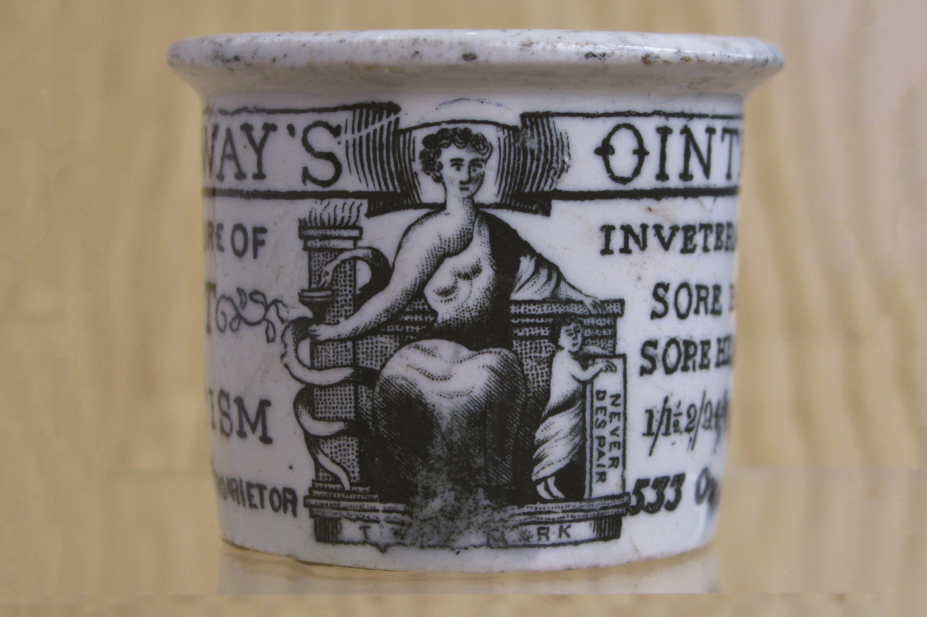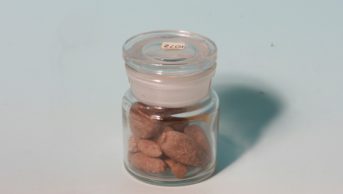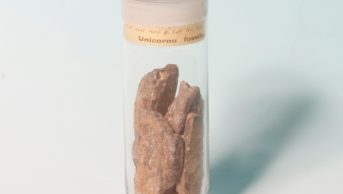
Museum of the Royal Pharmaceutical Society
Standing at just 4cm tall, this earthenware pot (1867–1880) once contained Holloway’s Family Ointment. The ointment was a quack remedy ‘for the cure of gout and rheumatism, inveterate ulcers, sore breasts, sore head, bad legs, etc.’ that became popular through a successful marketing campaign. It is said that its developer, Thomas Holloway, even tried to bribe Charles Dickens to include the remedy in his books, but the author refused. The trademark image shown on the pot is of the Greek gods Hygieia and Telesphorus, personifying hygiene and convalescence respectively. The Bowl of Hygieia, with its entwined serpent, is still a common symbol of pharmacy today, particularly in Europe.
Historic and mythological influences on medicine packaging will form part of a new temporary exhibition at the RPS Museum opening next month. The museum is also co-hosting an academic conference on ancient skincare and cosmetics to be held at the Royal Pharmaceutical Society on 15 February 2018. For more information, contact museum@rpharms.com.

